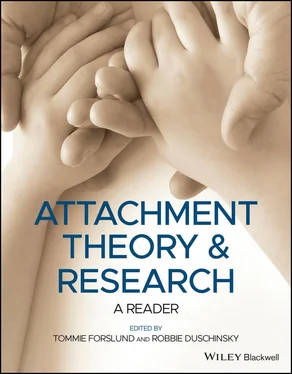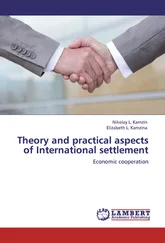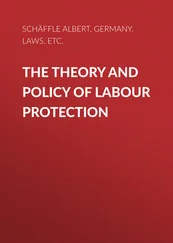In my previous paper I discussed the perceptual and cognitive aspects of the child’s tie to his mother and pointed to the evidence that prior to about 6 months the infant’s differentiation, as measured by his responsiveness, between familiar mother‐figure and stranger is present but only evident on careful observation. After about 6 months, however, differential responses are very striking. In particular I referred to the recent work of Schaffer, who observed the responses of twenty‐five healthy infants aged under 12 months to admission to hospital for elective surgery. Of those over 28 weeks of age all but one fretted piteously, exhibiting all the struggling, restlessness, and crying with which we are familiar in rather older children. On the other hand, of those aged 28 weeks and under all but two are reported to have accepted the new environment without protest or fretting; only an unwonted silence indicated their awareness of change. Similarly, infants in the two age‐groups exhibited very different responses both to visitors during the period of separation and also to their mothers on return home. Those over 28 weeks behaved negatively to strangers, but to their visiting mothers were demanding and clinging: those under 28 weeks, on the other hand, seemed hardly to differentiate between stranger and mother (though it was noticed that they became more vocal during their mother’s visit). 17 On return home those over 28 weeks clung tenaciously to their mother and cried and were distressed if left alone by her: those under this age showed no such behaviour but instead appeared bewildered, scanning their surroundings with a blank expression (Schaffer 1958; Schaffer & Callender, 1959).
These observations, if confirmed, strongly suggest that separation anxiety on losing mother is not exhibited before about 28 weeks. As Schaffer points out, this is strikingly in keeping with a prediction made by Anthony (1956) on the basis of Piaget’s findings. 18
To conclude, as I am inclined to, that human infants younger than about 28 weeks do not experience differentiated separation anxiety on losing mother is not to suppose that they experience no anxiety whatever before this age. Though during these weeks the selection of a loved object may still be only embryonic, the instinctual responses comprising attachment behaviour are not. We know that crying and sucking (and in less degree clinging also) are fully active in this period and, in so far as a terminating situation is not quickly established for them, we may presume that primary anxiety is experienced. Moreover, sucking becomes monotropic fairly early, in as much as the infant quickly comes to prefer a particular object to suck – breast, bottle, or dummy. When he loses it he is upset. How significant for later personality development these primitive forms of separation anxiety are seems to me an unsolved problem. Though of great theoretical and practical interest, it is however one which is not of central concern to this paper and will therefore not be pursued further.
Let us now turn to the course of events which follows this early and controversial period. After the age of 6 months variations in the intensity of attachment behaviour, and pari passu in the intensity of separation anxiety, occur both in the short term and in the long. As regards short‐term changes , every mother discovers that her child varies considerably from day to day and week to week. Some days he is intensely ‘mummyish’, on others much less so. It may help reconcile her to it to know that infant chimps are no different. Of Gua the Kelloggs write: ‘During her fifteenth month, when she seemed to be in an “accelerating” phase of her cycle of affection for the chosen experimenter, she would scream and rush after him whenever he opened the door of the house. If left behind, she would run from one window to another pounding upon them and wailing’, despite the presence of a familiar substitute. ‘In the same stage of development she began to cry again to be carried by the individual of her preference and nothing would calm her till she had her way.’ Although the Kelloggs seem unable to account for all the variations, some of them were obviously the result of particular conditions. Thus ‘after a brief sickness, during which her dependency necessarily increased, Gua behaved again for some weeks almost as she had at the beginning, even though she was then many months older.’
The very close connectedness of the response systems mediating escape and those mediating attachment has already been emphasized. Inevitably anything which frightens the primate infant serves to intensify his attachment behaviour and, in the absence of his mother, to magnify his anxiety. Yerkes, generalizing about infant chimps brought up with their mothers in captivity, describes how ‘even at 2 years of age, after it can feed itself and move about independently, the youngster will rush to its mother or to other adults in any emergency.’
Human mothers are familiar with such patterns of behaviour. Just as the child in his second or third year seems to be becoming more independent, he has a phase when he becomes more demanding again. Sickness, fright, or a period of separation often account for it. So too does the mother’s own mood. As often as not when a young child becomes fretful and anxious it is because his mother has been upset, either with him or with someone or something else, and has consequently been brusque and irritable with him. She is less patient, her tone of voice changes, her expression is different: these are the things to which young children are keenly sensitive. Furthermore, it is not uncommon for mothers to use the fear of separation – or withdrawal of love which is substantially the same thing – as a sanction to enforce good behaviour. Sometimes this is done as a deliberate policy, more often almost unconsciously. No matter how expressed, however, it is a powerful sanction and, as Fairbairn and many others have emphasized, inevitably increases the child’s proneness to separation anxiety. It is this aspect of the theme that Sullivan picked on almost exclusively, thereby making his views in the weight he gives to parental influence in the genesis of neurotic anxiety the counterpart of Klein’s in the weight she attributes to constitutional factors. This debate is referred to again in the next section where we consider why one child rather than another becomes prone to excessive separation anxiety.
Nevertheless, even though experiential factors of one kind or another can frequently be seen to account for short‐term variations in intensity of attachment behaviour, on some occasions it is very difficult to trace the reasons. Perhaps in human children it is the same as it was with Gua, whose ‘attachment would wax and wane in a slow irregular rhythm’ during the nine months she was with the Kelloggs. Systematic records are obviously required.
As regards the long‐term changes , both in chimps and humans the instinctual response systems mediating attachment and escape behaviour slowly modify. Not only do they become less readily activated and, when activated, active at a lower level of intensity, but they come to be organized around an increasing range of objects. These two kinds of change appear to be taking place during the same period of the life span and consequently are not always easy to differentiate.
The processes underlying the long‐term reduction in the frequency and intensity of their activation, with its concomitant reduction in separation anxiety, are unknown. As we have seen, their ready activation in early childhood is easily accounted for by their survival value. Since as the child grows older they become less necessary, it may well be that there is operative a maturational process designed to restrict their activity, as sexual activity is restricted at the menopause. Nevertheless experience and learning certainly play a considerable part also. As time goes on, the better grounds a child has to believe that his parents love him and will return to him, the less apprehensive will he be both before their departure and whilst they are away; the weaker the grounds, the more anxious on these occasions.
Читать дальше












